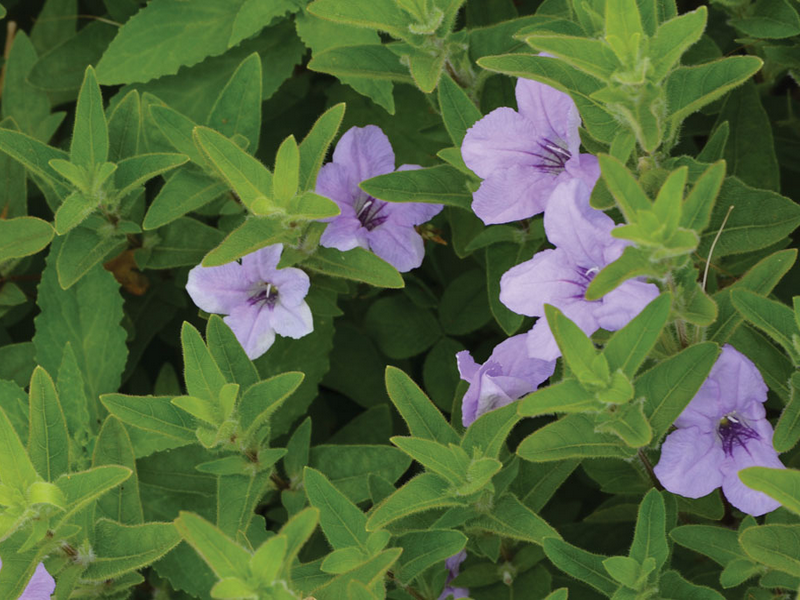Wild Petunia
Ruellia humilis
Click here to download a PDF of this plant information page (for printing).

Sun Exposure: Full Sun, Part Shade
Season of Interest: Spring, Summer
Bloom Time: June - Septmber
Bloom Color: Lavender to Purple
Height: 12 to 16 in.
Spread: 12 to 18 in.
Spacing: 18 in.
Water Needs: Average
Maintenance: Very little
Soil Type: Clay, Loam, Sandy, Rocky
Soil pH: Acidic, Neutral
Soil Drainage: Well drained
Pests: None
Diseases: None
Wildlife: Bees, Butterflies, Hummingbirds

Description:
Wild Petunia is native to much of the eastern US. This lovely plant isn't actually a petunia but rather a member of the mint family. That being said, the resemblance is striking. Standing about a foot in height, Wild Petunia is an excellent addition to a bed with other short plants. In ideal conditions, this plant can exceed one foot and spread quite vigorously. Blooming throughout the hottest, driest times of the summer, Wild Petunia is sure to please while other plants are withering away. It is quite a hardy species as well, handling most conditions you could throw at it, save for swampy soils and deep shade. In fact, it's so hardy that it can be a bit aggressive, so keep an eye on where seedlings turn up. It does great as a ground cover, with a sidewalk or something to contain it. When mature, the seeds literally explode from the plant, traveling upwards of 10 feet! For more information see:
www.missouribotanicalgarden.org
Care and Growing Tips:
Wild Petunia is a hardy perennial, thriving in nearly any growing condition that you might throw at it: wet, dry, hot, hotter, sun, partial shade. It grows well in our humid East Tennessee climate and likes regular moisture and well-drained soil. When planted in full sun, it will flower profusely. It grows well in partial shade, too, but will produce fewer blooms.
Wild Petunia grows best in neutral to acidic soil that drains well. But this plant is not picky, and it will grow in most conditions. Wild petunia is known to survive and thrive in spite of flooding or even drought conditions. But for best results in your garden, provide supplemental water in extremely dry conditions.